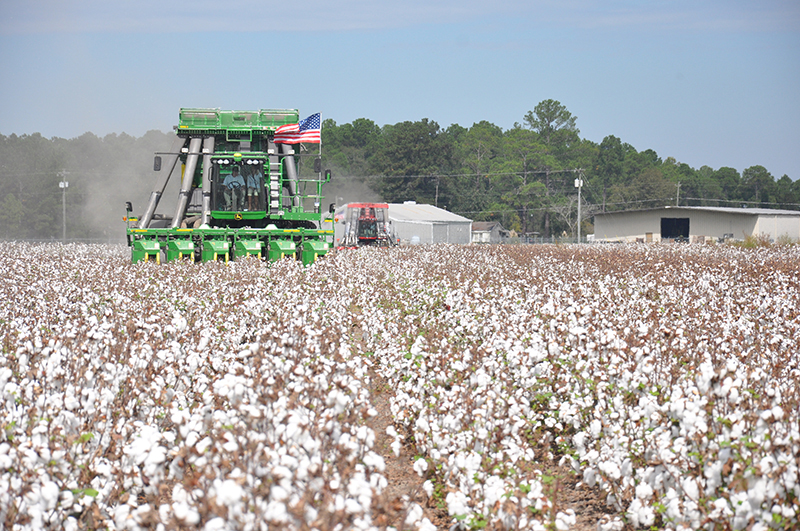In addition to root-knot nematodes and target spot disease, Georgia cotton farmers should be prepared to fight bacterial blight, said University of Georgia Cooperative Extension plant pathologist Bob Kemerait.
Kemerait advises producers, specifically those who farm in fields with a history of bacterial blight, to consider planting resistant varieties and managing the residue from last year’s crop. Farmers could also rotate the affected field away from cotton for at least one season.
Infected seed can also spread bacterial blight.
“Like we saw last year, there were fields where cotton production hadn’t occurred in many years and bacterial blight showed up to a small degree. How did it get there? One of the possible reasons is that it came in on the seed,” Kemerait said.
Bacterial blight, also known as angular leaf spot because of the characteristic geometric shape of the leaf lesions, causes water-soaked lesions on cotton bolls. The lesions are often most prominent at the base of the boll. The disease has been more problematic the past two growing seasons. Significant defoliation and boll rot were reported in the most affected fields.
“Bacterial blight is very much on the minds of our growers. In 2016, it was not severe or yield-limiting in most places, but there were some areas, especially in southwest Georgia, where yield losses did occur due to this disease,” Kemerait said.
No effective control product is available for growers to spray to control the disease, he said. Management tactics have to be employed before the cotton crop is planted.
Planting a bacterial-blight-resistant variety is one control method, but it comes with risks, Kemerait said.
“Growers should carefully consider a number of factors in addition to bacterial blight resistance when selecting a cotton variety,” Kemerait said. “There may be other, more desirable varieties, such as ones with nematode resistance or higher yield potential.”
Root-knot nematodes, which are microscopic worms, also threaten Georgia’s cotton production. They attack the plants’ roots, causing swollen galls to form in response to the infection. The knots serve as feeding sites where the nematodes grow and lay eggs. This stunts the plant’s growth.
Kemerait advises farmers to select a cotton variety based on past problems they’ve experienced in their fields.
“If you were significantly impacted by bacterial blight in 2015 or 2016, or you simply find any level of bacterial blight unacceptable, then you may want to select a variety with increased bacterial blight resistance and manage nematodes, if necessary, with nematicides,” Kemerait said.
He advises growers not to lose sight of other diseases, especially target spot disease. Target spot disease, or corynespora, begins as a small spot and develops into white lesions with the characteristic, target-like concentric circles on them. At this state, the plants begin to defoliate rapidly.
“Heading into this year, there’s no doubt target spot is an issue that we need to be concerned with. Not every grower in the state needs to make fungicide applications to manage it, but every grower should be aware of the disease, be aware of which fungicides are labeled for control and when to apply the treatments,” Kemerait said. “Growers who have had high yield potential and high disease pressure in the past, especially in southwest Georgia, are most at risk.”
For more information about Georgia’s cotton crop, go to www.ugacotton.com.





.jpg)


